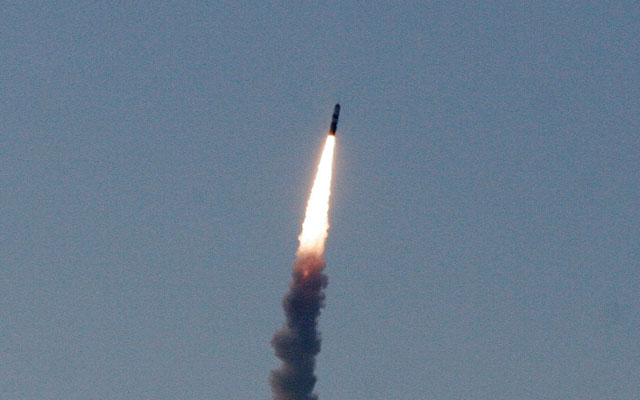U.S. nuclear weapons remain relevant for the security challenges the U.S. faces after the end of the Cold War, writes Georgetown’s Matthew Kroenig in his article “Think Again: American Nuclear Disarmament.” “Nostalgia for simpler times can be seductive,” he says, “but the United States needs a nuclear force that can protect it from the challenges that lie ahead.”
Currently, the U.S. is the only nuclear weapons state without a substantive nuclear weapons modernization program. During the New Strategic Arms Reduction Treaty (New START) deliberations in the Senate in 2010, the President promised to fund the U.S. nuclear weapons complex at a level of about $85 billion over the next 10 years. Yet his promises didn’t survive even a year after the treaty entered into force. As Kroenig asserts, President Obama needs to carry through on his promise to modernize the U.S.’s nuclear infrastructure.
New START allows Russia to increase its nuclear arsenal, while the United States is obligated to reduce its own. And the President is seeking to further reduce the number of U.S. nuclear weapons.
Meanwhile, threats to the U.S. and its allies have not abated. Russia has pointedly “threatened to use nuclear weapons preemptively” against U.S. NATO allies if they pursue missile defenses that would protect them from Iranian ballistic missiles. In February, North Korea conducted its third nuclear weapons test in defiance of its international obligations. In March, Pyongyang threatened the U.S. with a nuclear weapons attack. Russia and North Korea are only a couple of nations that Kroenig points out are currently modernizing their nuclear arsenals.
The President stated his ultimate goal—a world without nuclear weapons—in 2009 but acknowledged the U.S. will maintain “an arsenal to deter any adversary…but…will begin the work of reducing…[the U.S.] arsenal.” Fewer nuclear weapons would force the U.S. to potentially target civilian populations, because it wouldn’t have enough capabilities to destroy an enemy’s hardened bunkers or tunnels. Such a strategy would be contrary to America’s morals, principles, and values. Thus, the U.S. needs to pursue a deterrence strategy that will be viewed as credible by U.S. allies and adversaries alike.
The U.S. needs a “protect and defend” strategy that includes a mixture of offensive and defensive forces, both nuclear and conventional. The goal should be to develop and deploy capabilities that threaten what U.S. adversaries value. If deterrence fails, the U.S. should be able to take defensive measures—including ballistic missile defense—to protect its forward-deployed troops, civilian population, and allies.
In today’s world, the U.S. should have a flexible and resilient deterrence strategy to protect U.S. interests and its allies. Furthermore, it is essential that the U.S. modernize its offensive and defensive capabilities. These efforts would strengthen U.S. chances to successfully deter future adversaries while providing optimal protection for its population and allies if deterrence ever fails.
John Collick is currently a member of the Young Leaders Program at The Heritage Foundation. For more information on interning at Heritage, please click here.































